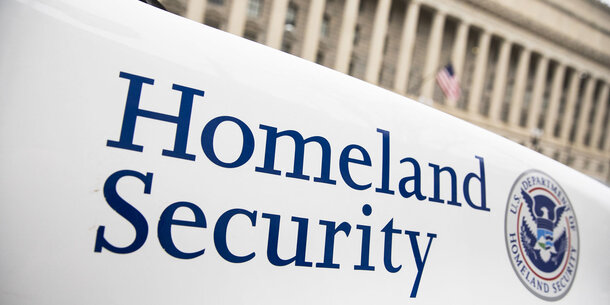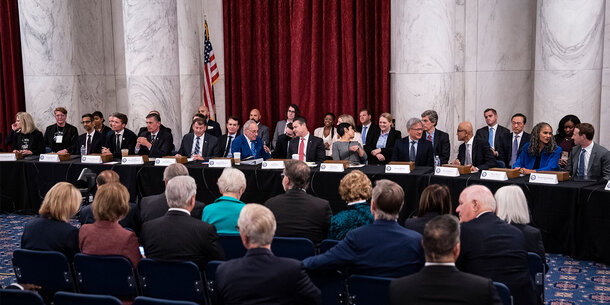Introduction
Note: This resource page was updated in February 2024 to include analysis of the U.S. Department of Homeland Security’s fiscal year 2022 Targeted Violence and Terrorism Prevention grants. The prior edition, covering only 2020 and 2021 grants, can be found here.
The Brennan Center analyzed the grant applications for the Targeted Violence and Terrorism Prevention (TVTP) grant program for the 2020, 2021, and 2022 fiscal years and found that the funded projects fail to enhance security against terrorism. They instead put innocent Americans and minority communities at risk. Although DHS has marketed recent initiatives as a response to white supremacist violence, the projects it has funded are almost never specifically targeted at this threat. The department’s claim that it is using a so-called public health model is undermined by its continued funding of law enforcement. Overall, recent TVTP programs offer more of the same flawed assumptions and weak outcomes as previous iterations.
The Brennan Center has repeatedly called for DHS to abandon — and for Congress to stop funding — these ill-conceived violence prevention efforts. Nothing in the supposedly revamped program changes the need to end it.
The Obama administration created the countering violent extremism (CVE) initiative at DHS, aiming to decrease the risk of terrorism by awarding grants to organizations that claimed to be working to prevent it. The Trump administration modified but carried forward the work, and a 2018 Brennan Center analysis showed that recipients of these grants predominantly targeted minority communities, including American Muslims, Black Lives Matter activists, and LGBTQ+ people.
Despite superficial changes, the fundamental premise and tools of the CVE program remain largely the same. And as a candidate, President Joe Biden promised to end CVE, but DHS instead rebranded it the Center for Prevention Programs and Partnerships (CP3) in May 2021 and continues to administer the TVTP grant program with a purported pivot to white supremacist violence, an assertion not supported by the 2021 or 2022 grants.
Meanwhile, the department has remained dedicated to the false notion that people who commit mass violence can reliably be identified in advance, while “radicalizing.” In fact, millions of Americans who never go on to commit violence share the same “warning sign” characteristics that these programs have consistently used to flag potential perpetrators. DHS has consistently framed people who are experiencing adverse socioeconomic conditions, may need mental health treatment, or are engaged in political expression as possible national security threats.
Research has shown that this premise is false. Perhaps forced to acknowledge this reality, DHS claims to have shifted to a “behavioral threat assessment model” that declares that no one pathway to violence exists, so instead potential subjects must be monitored by community leaders, educators, and health care professionals — often working with law enforcement — for extended periods of time. Yet Brennan Center research has found that these programs almost invariably end up falling back on bogus behavioral indicators, changing little about the program. And for 71 percent of the funded projects across the three grant cycles, the aim of some or all their proposed activities is to identify potentially threatening individuals and intervene, largely based on these indicators. Law enforcement remains involved in a majority of grants, and many other grants target nonviolent behaviors or social problems.
Despite scant evidence that these programs provide any security benefits, Congress continues to fund the TVTP grant program, allocating $10 million for fiscal year 2020 and increasing funding to $20 million per year for 2021–2023. (Grants awarded for fiscal year 2023 are not yet publicly available.)






